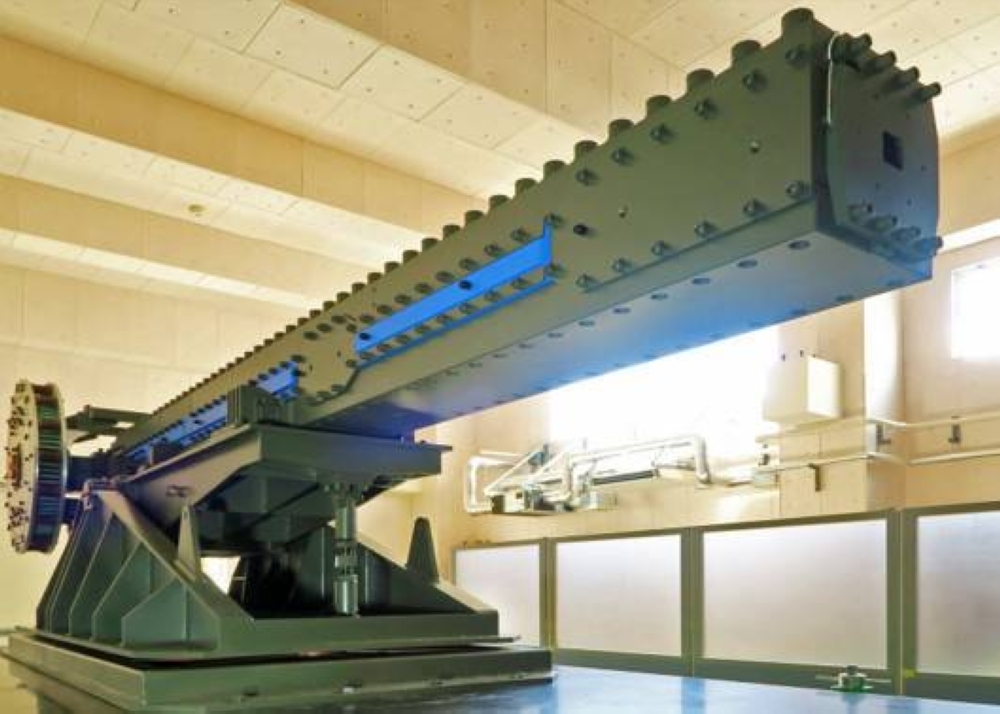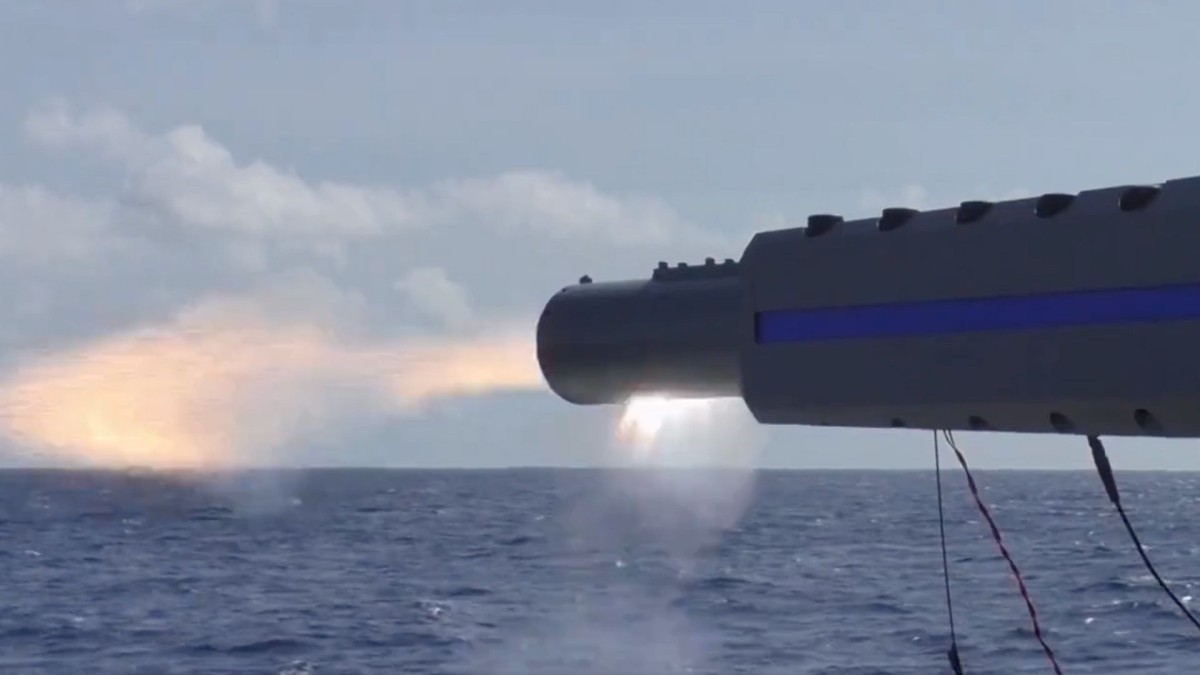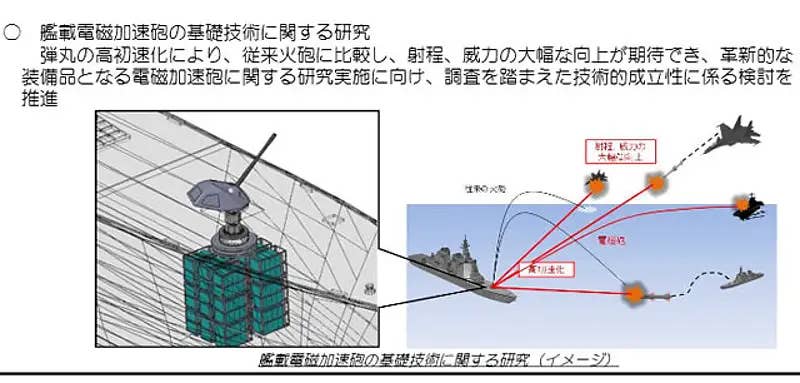Discarded By US Navy In 2021, Japan Keen To Delve Into US Research To Master Electromagnetic Railgun Tech

Japan has dispatched a defense official to the US Navy to leverage its extensive experience in railgun technology, aiming to accelerate the development and practical use of this advanced weapon, according to government sources.
The Acquisition, Technology, and Logistics Agency (ATLA) of Japan’s Defense Ministry is spearheading the development of a medium-caliber electromagnetic railgun.
The agency has been working on developing a railgun since fiscal 2016 and achieved a major milestone last year with the world’s first offshore shooting test conducted aboard a Maritime Self-Defense Force vessel.
Railguns, which utilize electromagnetic force to fire projectiles at extremely high speeds, are seen as a potential “game changer” in military strategy. They offer several advantages over conventional firearms, including lower operational costs and projectiles that are more challenging to intercept.
The Self-Defense Forces (SDF) envision deploying railguns on various platforms, such as vehicles and vessels, for ground and anti-ship attacks, as well as missile interception.
Get AfriPrime Android Web View app....Click the link to Amazon app store to download https://rb.gy/3xek46

However, significant challenges remain, including improving firing accuracy and reducing the weapon’s size to make it more practical for deployment. To address these challenges, ATLA has sent a technical official to a research institute affiliated with the US Navy, reported Japan Times, citing officials.
The official, who began his assignment in November of last year, is expected to gather insights from US experts involved in railgun development and to inspect relevant facilities.
The United States has a rich history of railgun research, having invested heavily in the technology over more than a decade. Despite significant progress, the US Navy ultimately discontinued its railgun program in 2021 due to changes in strategic priorities and budget constraints.
The challenges they faced—particularly in managing energy, heat, and wear on the platform—remain unresolved, but the accumulated knowledge and experience are invaluable.
“There is much to learn because a lot of money has been invested in research, and many prototypes have been made,” said a senior agency official. Moreover, Japan is considering sending additional personnel to continue this knowledge exchange after the current official returns in June.
By tapping into the extensive research and development conducted by the US, Japan hopes to overcome the existing technological hurdles and bring railgun technology into practical use sooner.
Tokyo’s push to expedite its electromagnetic gun program coincides with Beijing’s swift advancements in the same field. China’s People’s Liberation Army-Navy (PLA-N) recently conducted a test of an electromagnetic railgun, firing a smart bomb at speeds surpassing Mach 5, reaching 15 kilometers into the stratosphere.
While the test was deemed unsuccessful, it yields valuable insights that will enhance ongoing research and development efforts.
Japan’s Quest For Railgun Technology
Japan’s foray into electromagnetic railgun technology dates back to the early 1990s when the Ground Systems Research Centre (GSRC) of the Acquisition, Technology, and Logistics Agency (ATLA) commenced work on a basic 16mm railgun.

This laid the foundation for subsequent advancements in railgun technology. In recent years, Tokyo intensified its efforts, particularly in 2016, with a focus on developing railguns designed for anti-air and anti-ship capabilities.
The culmination of these efforts came in 2018 when ATLA released video footage showcasing a proof-of-concept example of a small-caliber developmental railgun, signaling significant progress in the field.
However, the true breakthrough came in October 2023 when Japan successfully tested its medium-caliber maritime electromagnetic railgun, a feat unmatched by any other nation.
The ATLA’s medium-sized electromagnetic railgun prototype is capable of firing 40mm steel projectiles weighing 320g at an astounding velocity of around 2,230m/s (Mach 6.5), propelled by five megajoules (MJ) of charge energy.

Notably, ATLA envisions scaling up the railgun’s power to operate on 20 MJ of charge energy, promising even greater performance. Railguns, at their core, operate on electromagnetism rather than conventional chemical propellants, enabling projectiles to achieve hypersonic velocities.
This technology holds immense potential for enhancing Japan’s defensive capabilities, particularly against fast-moving airborne and maritime threats.
While Japan has not disclosed specific plans regarding the deployment of railguns, reports suggest potential integration into Japan Maritime Self-Defense Force destroyers.
The possibility was first hinted at in 2015, with Japan Marine United (JMU) suggesting that the advanced 27DD and 27DDG guided-missile destroyers could accommodate electromagnetic railguns, leveraging their enhanced power-generating capabilities.
In addition to naval deployment, ATLA’s plans include mounting railguns atop land-based trucks to target hypersonic missiles, further expanding Japan’s defensive capabilities against aerial threats.
Get AfriPrime Android Web View app....Click the link to Amazon app store to download https://rb.gy/3xek46
- Questions and Answers
- Opinion
- Story/Motivational/Inspiring
- Technology
- Art
- Causes
- Crafts
- Dance
- Drinks
- Film/Movie
- Fitness
- Food
- Jogos
- Gardening
- Health
- Início
- Literature
- Music
- Networking
- Outro
- Party
- Religion
- Shopping
- Sports
- Theater
- Wellness
- News
- Culture
- War machines and policy

